Yesterday my daughter turned 37; her daughters are going to turn 4 and 1 in another month. My dad hit 89 in January, and I made it to 64 in March… With these markers in time, it’s impossible not to notice how short our lives are. I’m already past the age that most people made it to a century ago. My mom died in late 2019 at 83, and my dad is still going, with expectations that he’ll make it at least to his mid-90s since he’s still mentally perfectly sharp. His mobility is severely compromised, and his hearing is going, but otherwise, why not? Meanwhile, my granddaughters are bursting with life, and my daughter is thriving as a mother, a public intellectual, an activist, and on the cusp of putting herself into the maelstrom of public school teaching for the first time. It’s all so darn interesting! And encouraging!
With age comes a deepening sense of the passage of time, but also of its immensity. And with new histories being written, reinterpreting or rediscovering histories that stretch back to times in the distant “pre-historical” past, the blip that constitutes our moment in time shrinks towards its eventual obscurity. All of my own writing and thinking are a product of the peculiar decades from the 1960s to the present (I was born in 1957). In my last post I mentioned the odd feeling of seeing government money being widely distributed, putting a thin tiny patch on a beleaguered and discredited social safety net. My whole adult life has unfolded in a time of aggressive capitalist assault on living standards, aggregate wages, the environment, and life in general, with the United States in particular responsible for a couple of dozen wars and literally millions of dead.
The persistence AND paucity of meaningful resistance also characterizes this period. I’ve been part of countless demonstrations, movements, and counter-cultural efforts to shift the values and priorities of this society, but the real experience of the past 40 years is one of continual loss, shrinking expectations, growing pessimism, and a broad collapse of empathy and solidarity all around me (albeit with many people trying their best to resist and reverse those trends). The dominant reality of being in the heart of the most militarized empire in world history, and seeing the wars and mayhem imposed on other countries either enthusiastically supported or blithely ignored, makes me feel a bit crazy. Seeing that culture of war and domination gradually engulfing daily life “at home” is enraging too, even if it’s impossible not to feel that some of those mass shootings, misogynistic violence, and police murders represent the (militaristic) chickens coming home to roost. But we know who suffers from this, and there’s no pleasure or even schadenfreude when the actual human consequences are part of the picture. As I write this, police officer Derek Chauvin was convicted of George Floyd’s murder, better than not for sure, but such a rare occurrence with so much attention only underscores how out of whack the whole system is. No doubt the mass demonstrations last summer, combined with the numerous eyewitnesses and witness videos were what produced this exceedingly rare case of accountability for police murder.
Perhaps years from now we’ll look back on this as a turning point, perhaps in combination with the repudiation of Trump and his racist followers, where we finally began the actual process of reconstruction and reparation that will take generations more, but maybe at last we’ve moved irrevocably onto that path. Let’s hope so, and do all we can to make it so.

One of my recurrent themes on this blog, a theme that undergirds nearly all my work, my readings and writings, is the deeper look at history. In multiple prior posts, here, here, and here (among others), I’ve explored how we know what we know, prying into the epistemological foundations of our sense of reality, as well as trying to blow up most of the assumptions we casually rely on regarding the roots of our culture and the history of the United States. New anthropological and archaeological evidence erodes the platitudes of teleological progress that are built in to most of our received histories. I just had the pleasure of reading several books that contribute to this process while also providing new histories to fill in blank spots or misunderstood chapters of our shared past.
My pal Annalee Newitz, a wonderful science writer and science fiction author as well, just published Four Lost Cities: A Secret History of the Urban Age (Norton, 2021). She had a lot of fun doing this book, I can tell, since she spent several pre-Covid years traveling to the Anatolian plains where Çatalhöyük, an ancient urban formation lay buried under mounds in today’s Turkey until its excavation in recent years, then to Pompeii, Italy, long buried under the ash and lava of Mt. Vesuvius’s 79 AD eruption, then to Angkor Wat in Cambodia, and finally to the confluence of the Mississippi and Missouri Rivers, where in a couple of centuries around 1150-1400 AD one of the largest cities in the Americas flourished, Cahokia, close to today’s St. Louis. In every case she engaged with archaeologists and anthropologists who have spent years investigating and interpreting the lives of these cities when they were at their height. New techniques that she learns about along the way help alter the paradigmatic focus of history on the elites to the lives of everyday people. In Pompeii some of her interlocutors are using
a new method of historical investigation called data archaeology. Through careful observation, they aggregate information about many structures and objects—like, say, hundreds of bars—to figure out the typical habits of individuals. It’s the perfect method for exploring a lost way of life.
p. 109
In Pompeii, a thriving port city in the late Roman empire, life had settled down from the earlier warring periods to enjoy its location at the crossroads of global trade at the time. Retail trade was spiking and coastal Pompeii was in the right place: “… people aren’t just buying and selling to each other. They’re part of a vast economic network that stretches all across the empire and into Africa, Asia, and the Middle East.” It’s so easy for us to accept the endless propaganda of the past few decades that we’re living through an unprecedented expansion of world trade, but such periods have gone by before, a century ago, and even a millennium ago.
Newitz goes on to Cambodia where her interviews with the archaeologists in Angkor Wat lead to a useful rumination on how debt enslaved the thousands of laborers (in Cambodian, khñum) needed back then to build the vast waterworks that sustained the royal capital for several hundred years:
The khñum debt slavery scenario sounds brutal until you consider that most capitalist cultures in the West use a similar system. In the United States, it’s not unusual for people to graduate from college with so much debt that they have to work their whole lives to pay it off. Others take on debt to pay for a house or buy a car. Though technically all of us can choose what kind of work we do to pay off these debts, it’s rare to find anyone who is doing the exact kind of work they’d like to do. Many of us feel like we’re being told to dig ditches by some distant corporate authority, or risk losing everything. Still, we keep working instead of rising up against the banks, for complicated reasons. Maybe we don’t want to rock the boat because our lives are relatively comfortable, or maybe we need health insurance to pay for a child’s hospitalization, or maybe the corporations seem too powerful to defeat. Those feelings might have kept khñum in line, too.
p. 163
She picks up on a very useful descriptive term, “sandcastle depreciation,” to explain how Angkor Wat’s waterworks eventually couldn’t sustain the population there, and how any developed society eventually succumbs to the entropic forces of nature and weather. Food for thought for us Californians who are living about a half century after the major waterworks were built here, dams and canals that may be the most extensive and bizarre plumbing project ever executed on earth. But with infrastructure crumbling everywhere, bridges and highways decaying, how long before a winter storm breaches one or more of our large dams, and it becomes impossible to rebuild? Or falling water tables due to overdrawn aquifers lead to collapsing canals that can’t easily be repaired? Or an earthquake leads to a massive influx of seawater into the Delta, rendering fresh water supplies undrinkable? It’s not really if these things are going to happen, but when, and under what social conditions?
I was most interested to read about Cahokia, the Mississippian Mound Culture, of which I knew little. Turns out to have been a huge city, maybe 70,000 people at its peak, drawing trade from all over North America and sending its own artifacts over thousands of miles too. Characterized by large mounds with buildings on top, situated around a series of large plazas, the culture that inhabited this majestic city astride two major rivers eventually suffered its own political revolution. The last century or more of human inhabitation in the Cahokian area were characterized by a decentralization and dispersal of the concentrated population, and a building of multiple plazas and smaller, more equal dwellings. She quotes anarchist anthropologist David Graeber about a similar process that has been deduced for the massive pyramids of Teotihuacan outside Mexico City. Citizens overthrew their leaders and built a more equal, egalitarian urban environment where they thrived for decades after the end of the hierarchical system that originally built the pyramids.
… many archaeologists today are questioning the idea that civilizations have “classical” or “peak” phases that we can contrast with a “collapse” phase. The idea of collapse comes out of the same 19th- and 20th-century colonial traditions that brought us the idea of lost cities miraculously “discovered” by European archaeologists. Thinkers in this tradition hold that all societies progress along the same path that European civilizations took, growing bigger, more hierarchical, and more industrialized over time. Societies that don’t embrace market economies are dubbed “undeveloped,” and cities that stop expanding are characterized as failures whose culture has collapsed. But this perspective doesn’t fit the evidence.
p. 237
Annalee has a great writing style, so though she’s presenting a lot of complicated research and its conclusions, you never bog down, and there’s always an entertaining tone to keep the story flowing. She sensibly concludes: “Maybe all our cities are in constant cycles of centralization and dispersal; or, if we think with our galaxy brains, they are temporary stops on the long road of human public history. (p. 240) … Troubled urban leadership can trigger a diaspora, which is what appears to have happened at Çatalhöyük, Angkor, and Cahokia. That said, we have a counterexample at Pompeii, where the government stepped in to offer humanitarian aid and disaster relief to the city’s refugees. Though Pompeii had to be abandoned, its people did not walk away from Roman city life. (p. 259)” Maybe that’s why Italians today have retained a quality of urban life that far exceeds that of many other cultures? They’ve been at it for centuries!
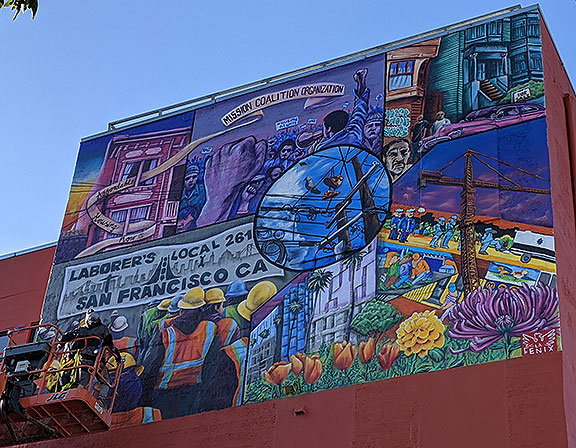
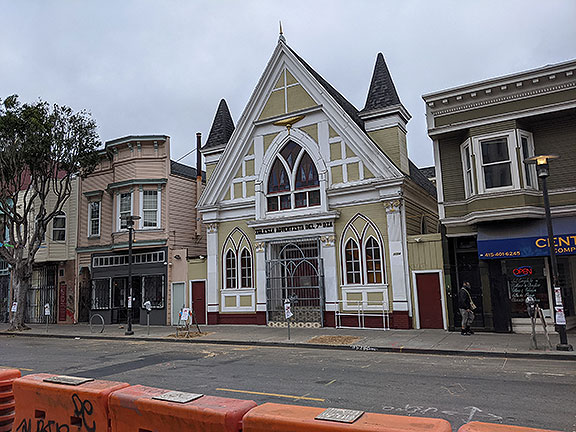
I also recently discovered a new historian who I can say without doubt is one of the best contemporary historians out there. I already rushed to buy two more of her books. Camilla Townsend’s new The Fifth Sun is a fantastic fresh look at the history of the Aztecs and the arrival of the Spanish from the point of view of the Aztecs themselves. She’s spent years mastering Nahuatl (I think she’s quite the linguist in general) and poring over the original documents in archives all over the world. Most of what we’ve received in our histories has been based on what Spaniards wrote down, but with her brilliant skills at language and research, she has gone through countless long-overlooked documents. Some were written before the Spanish arrived in the original form of “annuals” reporting on both current events and history in a pictographic lexicon. Later, during and after the wars that led to the successful political control of the Spanish, ongoing native accounts were kept in various forms, and over the years, increasingly written in the alphabet imported by the conquerors. Additionally, diaries and legal documents inform her research, as do some remarkable histories written by children and grandchildren of elite Aztec and other tribal families around the original Valley of Mexico. Right from the start she helps us understand the self-conception of the Aztecs, that they knew they were part of a larger migration from the north that had moved into the area only a few hundred years earlier, and on arrival had to occupy the swampy undesirable island that later became the heart of their imperial city Tenochtitlan (later Mexico City).
It isn’t necessary to believe that we can hear the exact words of a conversation held in 1299 to know that the essentials are true. Archaeological and linguistic evidence, as well as the written historical annals of multiple Mexican towns, all indicate that the ancestors of the people now known as the Aztecs came down from the north over the course of several centuries, that those who came last found themselves without land, and that they then had to jockey for power in the fertile central valley. We know how they waged war, and we recognize the symbolic significance of the chiefly daughters and sisters raised to mother the next generation’s chiefs.
p. 15
It doesn’t happen very often, but this rather brief 200-page history book was a real page turner for me. Not only because I was so interested to understand the complicated series of events that led to the conquest, but also there is a palpable excitement to have a book that seems to have uncovered a whole world view that has until now been unavailable. And it’s a worldview that is quite alien to us in some respects, but is one that Townsend’s skilled presentation helps us understand is also quite familiarly human.
Other scholars would argue that although people’s cultures vary to an immense degree, we are all nevertheless human in the same ways; what makes us feel loved, for example, may vary, but the desire to be loved does not. Or what makes us feel afraid may differ, but the need to find some degree of security is a constant. In this book, I take it for granted that both schools of thought are absolutely right, and that good history explores the tension between them. The Aztecs I have come to know are both profoundly different from me and mine, and yet at the same time, deeply similar.
p. 212
Like all good historians, she’s grappling with the silences in the available evidence. “Letters and diaries sometimes bring us close to grand moments or touching scenes in the history of Euro-Americans, but harkening back to the thoughts and feelings of the less powerful, we meet only silence.” (p. 140) Fortunately, Townsend is able to tap a rich trove of documents written by men who urgently wanted to record what had happened during those tragic years. They went about transcribing the memories of elders who had lived long before the arrival of the Spaniards, and they recorded the experiences of countless individuals who lived through the wars that destroyed Aztec political control, but then saw it morph in its adaptation and relation to the new power of the Spanish.
To them, truth was necessarily multiple; they knew that no single person could give a full account of an important moment. And they wanted posterity to understand the constraints they had faced and the reasons they had finally acquiesced. They filled dozens of pages, complete with dialogue, detail, anger, and hope. The Spaniards still dreaded the mighty Aztecs, but the Mexicas’ own fears in the night were of a different sort. After all the power they had once wielded, they feared that all true knowledge of the world they had inhabited would be lost. It was the prospect of oblivion that haunted them.
p. 179
Maybe it’s that same prospect that drives me and others to write blogs, books, and the like. I’ve certainly found myself wondering lately why do I bother? I know there’s a few hundred people out there that really appreciate my work, and I have circles of “fans” for various prior efforts I’ve done (Processed World, Critical Mass, etc.). And that’s all good. I certainly hope my words have inspired people in their own lives in various ways. But I do sometimes wonder what makes me feel like I have anything so important or so different to say that it justifies all the effort of writing and publishing yet another book. There are so many books out there already (I just ordered another dozen from various University presses during the just-finished Organization of American Historians conference!). I can’t help but notice that it takes a certain egotism, a certain kind of self-importance, to feel the burning urgency to write and publish. I still have it (obviously, here I am), but I notice it waning a bit, in direct proportion to the extent that I feel the smallness of my time on the planet, the insignificance of my experience in the long flow of history, etc. Maybe I should just follow Voltaire into my garden, and enjoy the birds, bees, and flowers, revel in my granddaughters as they burst with excitement and happiness over the simplest of games, and just relax? I guess I’ll do that too… but meanwhile, I’ll keep writing, since it is an intrinsically pleasurable activity for me. I don’t suffer over it, except when I’m writing for someone else or on an arbitrary deadline (two things I’ve become adept at avoiding). Of course, avoiding editors and deadlines also means languishing in the distant margins of invisibility, accepting that my unwillingness to “compete” for the attention of publishers and magazine editors ensures that whatever vital insights I have to contribute continue to reach only a very small audience. So it goes…

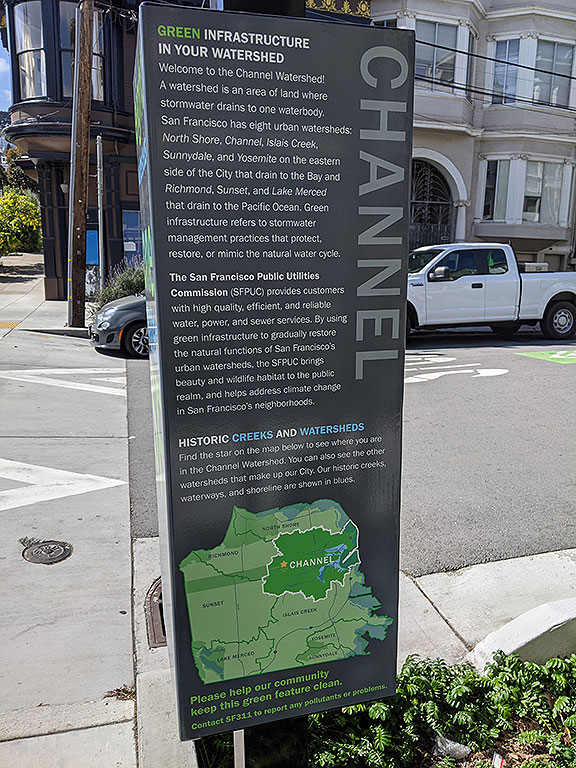
Lastly I also read a book that didn’t leave me with any profound insights, but I was glad to digest its many curiosities. The Golden Rhinoceros: Histories of the African Middle Ages by François-Xavier Fauvelle (Princeton University Press: 2018) offers about two dozen small chapters on obscure ruins or accounts of long-lost cultures on the African continent. Each chapter ends in a long bibliographic note that reflects the self-conscious constraints of the historic research encountered by the author (a well-known French anthropologist), but also points to what does exist of documentation or archaeological evidence for the accounts he provides, spanning the Sahara, West Africa, the East African coast, the Ethiopian and Nubian cultures of northeastern Africa, and the once-thriving trading cultures connected to the Islamic world in Zimbabwe and Mozambique.
Here’s some of Fauvelle’s introductory thoughts:
Memory is the condition, not the negation nor the opposite, of history. Yet we should note that this continuity of memory was lacking in most of the regions where kingdoms and cities developed. Gone were the long-established foreign merchants; gone the African traders who were their longtime partners; but gone, too, were the elites and, quite often, the local population.
p. 7
The question of the reliability of these oral traditions for reconstructing the distant past is a matter of heated debate among historians of Africa. Nonetheless, most among them would agree that, if oral traditions should certainly not be denied their status as historical documents for accessing the past two, three, or sometimes four centuries, their inherent limitations preclude their enabling any thorough reconstruction of earlier periods. It should not, of course, prevent us from listening very closely to African voices when they have come down to us thanks to a written document, as is the case, for instance, with the account of the rise to power of King Mûsâ of Mâli, told by the king himself to an Arab secretary in the chancery of Cairo. However, though such voices are clearly a bonanza for the historian and the reader, one should resist the temptation—rooted in both the relief of a sudden and direct access to the past and a naïve attitude towards the interpretation of all things African—of taking such discourse at face value. A political statement by a Malian king of the fourteenth century is no less elaborate and finely chiseled than any diplomatic statement today, and thus it must be studied as such.
p. 5
Next time, more California history!


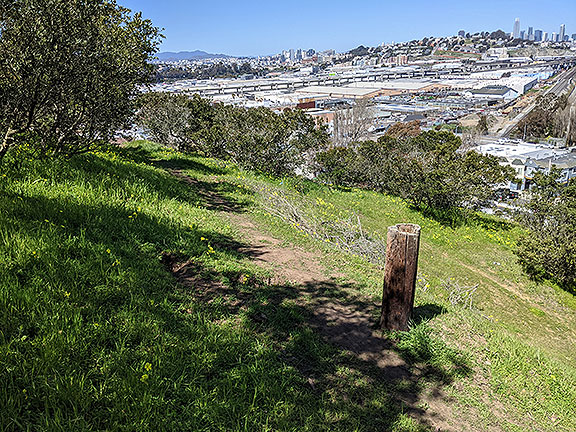
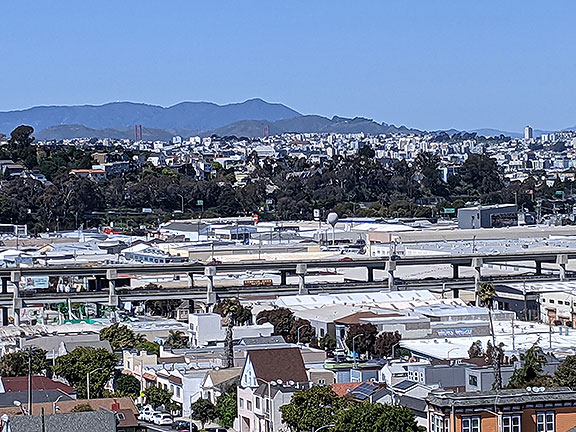











Interesting to read your perspective on the self-imposed mania for self-publishing. Being a rough contemporary, I would say I share your reservations – but then multiply them by a thousandfold.
This has long been the Information Overload Age, and look what it has produced: stupid shit being broadcast everywhere, by everyone with a keyboard, all fueled of course by enormous fossil fuel data centers. While there are alert and well-written sites such as yours (OK, yours is, don’t know too many others) there is so much amplified nonsense, from outside the academy and from inside its long-corporatized walls.
Do we want to add more ignorable penetrating social criticism to a world of epic fantasism and stupendous clacking of chatter via all the social media advertising behemoths? To what failing end?
Who can take this culture of racism and militarized religious anti-humanism seriously, either in the US or in the other bastions of autocracy? The world cannot be reformed, either through books or through constantly chirping like a bird on a wire.
With so much vapid idealism on our side, why not enjoy the absurdity of individual consciousness amid this predicament, the joys of Voltaire’s garden, the enduring appeal of California as in “Los Angeles Plays Itself,” and Tarantino’s “Once Upon a Time Hollywood,” and whatever great and minor happiness that accrues via fate to an inherited, and yes, fossil-fueled life?
Glad you’re still writing, Chris!
Hi Chris
I enjoy reading your blog and always learn something new which I appreciate. However, I must say that I disagree with you when you say that the trees on 24th St. are ugly. I do agree that the trunks are not so beautiful, but what is important to understand is that the canopy the trees provide is what is really beautiful! Our “crazy” efforts to save the trees is our “crazy” efforts to save our environment. The new trees that are going to be planted will not replace the important canopy that the ficus trees provide (they are small slow growing trees).
Also, someone came in our garden the other day and remarked that with the trees gone it exposed the ugliness of many of the buildings which need painting and cleaning. And they were concerned what it will be like later in the year when the sun starts beating down and there is no shade.
Thanks for this. Definitely a book or two i must read.
Always a pleasure to read your blog and check out your book recommendations! Don’t stop! Though slowing down is perfectly acceptable.